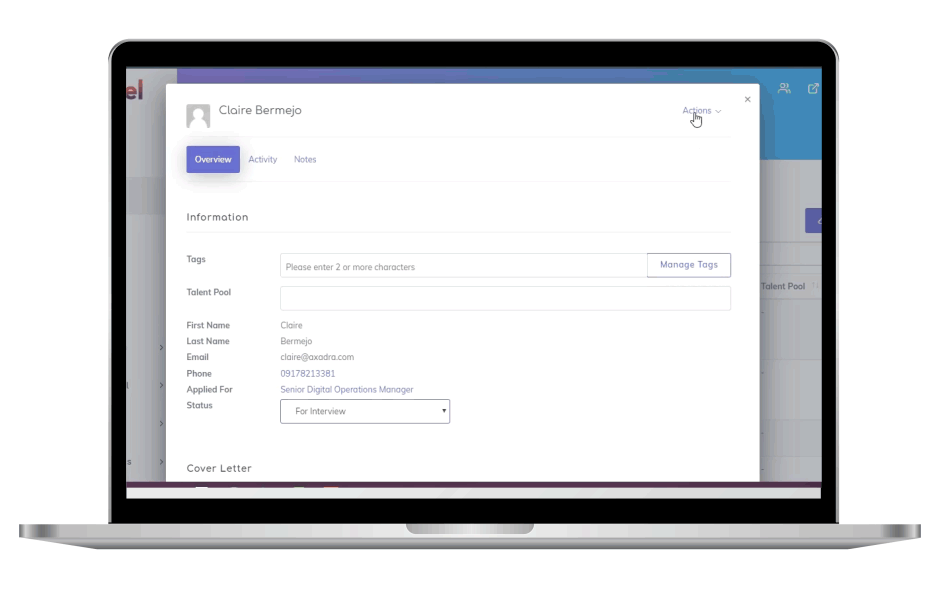Good companies devote serious time and thought into developing a strong internal recruitment strategy, as it becomes harder and harder in modern workplaces to fill technical and managerial positions with ideal candidates.
In 2019, the State of the Workplace Report by the Society for Human Resources Management (SHRM) reported that 83% of surveyed HR professionals acknowledged the difficulty of recruiting suitable candidates over the previous year; 45% of them also said that applicant quality had decreased for specific positions.
This situation has driven companies to look further afield, forcing them to shoulder additional costs for regional or overseas candidates – items as such relocation, immigration paperwork, signing bonuses, and other performance incentives that are written into the contract.
Efficient internal recruitment planning can avoid some of these costs and source the best talent much closer to home. When it’s part of a larger training and development program, it rewards talented, hard-working members of the company, strengthens morale and motivation and gives a company greater leadership continuity.
The financial cost is important but not the only consideration. Staff engagement, productivity, and overall organizational performance are at stake, too.
The Advantages of Internal Recruitment
So why should a company consider internal hiring first? Let’s look at the reasons.
- You Know Your Candidates
Managers are familiar with their colleagues’ skills and attitudes. You know their strengths, weaknesses, and can assess them based on technical, managerial, and interpersonal criteria. You have documented their work track record on file and a fair idea of their fit for the job.
To be fair to everyone, internal candidates should submit all necessary documents to apply like everyone else, but you and your colleagues who have the decision-making power know who should make it on the shortlist.
- It Saves Time and Money
In financial terms, this is internal recruitment’s big advantage over external recruitment. Recruiting internally costs much less if you don’t need to pay for executive recruitment company services, job website postings, access to resume databases, as well as a background screening.
Time is also saved since you can filter internal candidates more quickly against the requirements of the position and spend less time interviewing them.
External candidate screening via interview is one of the lengthiest tasks during the hiring process. So is the background and reference check, which internal candidates have already passed.
- They Fit Within Your Company Culture
Internal candidates who are being seriously considered for the position are already familiar with your company culture and the values it stands for.
Employees whose personal values are aligned with those of the company they work for have the best chances of staying motivated and working at performance levels expected of them. If they’re vying for higher positions and bigger job responsibilities are already signaling to you that they’re committing themselves to stay longer and pushing their career forward with you.
A question of company and culture fit is a discussion about investment, and the amount of risk a company is willing to shoulder for that investment. They’re probably a safer investment than an external hire who’s completely new to the company.
- Training and Onboarding Times Are Shorter
This is an argument about productivity and team performance.
You will save time if your internal hire gets settled into the position faster than an external candidate because they already know how to perform some of the job tasks and have met with, or previously worked with, members of the team. Familiarity with software, workflows, and team dynamics go a long way in getting desired results.
One of the biggest advantages of internal hiring is the presence of existing relationships amongst team members. If the new hire knows and adapts to how their team operates, everyone works faster and better.
- Hiring Internally Boosts Employee Performance and Retention
When sustained training and promotion career tracks figure clearly and strongly within employment development programs, not only are you streamlining your hiring plan and recruitment process – you send a strong message to all team members that you believe in them and will prioritize their career growth and success.
In this sense, strategic internal hiring is not just a manpower continuity program, but a powerful motivational boost that can benefit your company in terms of increased company loyalty, commitment to the job, and improved performance and productivity.
- It Enhances Your Company’s Reputation
Internal recruitment is also a powerful branding tool for your company.
Your company’s network of internal and external stakeholders will learn more about what you represent, not just in terms of the product and services you offer and the manner in which you deliver them. They’ll hear of how you take care of employees and motivate them toward success.
A cohesive program of internal recruitment creates positive word of mouth in the industry, enhancing your company’s brand and reputation even with competing firms.
If you are known for training, nurturing, and rewarding your employees, this will help your company stand out to external recruitment candidates, helping you attract the best and brightest candidates who are still out in the market.

How to Optimize the Hiring Process for Internal Recruitment
Let’s now look at the hiring cycle. Because fairness and neutrality are expected in the hiring of any candidate, there isn’t much difference in the process of hiring externally or internally. There are, however, ways to streamline it and personalize it for internal candidates.
- Requisitioning
Managers looking to hire prepare and present a job requisition (or request for hire). This document describes the position, why the hire is needed, and states the budget requested for the position. This requires the approval of upper management and HR.
Tip: The manager who sent this notice may have internal candidates in mind. If that is the case, HR and department managers with hiring decision powers should be notified, so the internal hiring process can begin.
- Job Announcement Posting
HR prepares the job description announces the job opening via various channels: email, newsletters, intranet bulletins, or verbal announcement to staff. The wording of the job description must be specific and comprehensive.
Tip: One important way of reaching out to good internal candidates is to simply go up to them and tell them. If the job position is already being planned for but not yet announced, you may give this same candidate a heads up so they can prepare wherever possible.
As a matter of courtesy, let team leaders or managers know if you’ve spotted a potential hire from another department. Finally, if the job opening is going to be offered externally to gather a larger pool of candidates, give your company employees first dibs at applying.
- Receipt of applications
Candidates submit application forms, resumes, and supporting documents, that are then databanked for sorting.
Tip: Save time by creating two piles – the “regular” pile from “regular candidates”, and a “shortlist” pile for candidates who are pre-qualified in some way or you’re going to evaluate first.
- Filtering
HR and management review applications, which entails rating and ranking each candidate according to their strengths and skills relevant to the position.
Tip: To save time and resources, prioritize the internal “shortlist” pile first; process these candidates according to rank and schedule interviews with them first before the others.
- Interview and Testing
The company conducts face to face interviews with the candidate and administers of skills or aptitude tests, where needed.
Tip: If you know the internal candidate well, do they need as many interviews as an external candidate? Chances are they do not. You may be able to fast-track them to just one final interview with your hiring manager – which might be you.
- Selection and presentation of the offer
It’s time to choose the right candidate, determine their package and compensation, and meet to present a formal job offer.
Tip: If you found your candidate internally, congratulations! This is the time when you will be giving very good news to one candidate – and have to let the rest down gently.
To those who didn’t make it, give as much personalized feedback as you can. Suggest some upskilling and be specific about weaknesses or areas for improvement. Most of all, encourage them to try again.

Cases When Internal Recruitment May Not Apply
Internal recruitment processes may not suit companies of all sizes. There at least are three cases when it may not be a good fit for the company’s business plan for in the short- and medium-term.
- The first case is for companies embarking on a fast expansion program, which requires expanding teams or opening new divisions. You may choose key internal players to lead these new teams, but the situation is straightforward – the company simply needs more manpower.
- The second case relates to filling a job that’s just been vacated – and you want to fill that gap with an existing team member. If the proposed replacement also needs training and onboarding, you’re looking at addressing two job situations instead of just one.
Do a short cost-benefit analysis of training vs. hiring externally. In certain cases, you might find that hiring one external candidate is more time and resource-effective than retraining and onboarding two team members.
- The third case relates to hiring at a time when the company has achieved some maturity and feels it needs new blood to invigorate the culture, bring in new ideas, and stimulate innovation in the company. In this case, opening key positions in the company might be more suitable for external candidates who show cross-industry experience, a mature technical skill set, and strong team-building abilities.

Ensuring Success with Internal Hiring Methods
Certain conditions will allow companies to recruit internally better than others. If hiring requirements occur on an occasional basis, internal recruitment and promotion may be sufficient.
Internal hiring is not a substitute for external hiring. Finetuning your company’s internal recruitment methods is an important strategy for optimizing your company’s overall recruitment process. It can allow you to cultivate team growth, and at the same time help you save resources and minimize the risk of unsuccessful hiring.
Companies that encourage mentorship and good at internal training and are growing at a steady pace are in the best position to grow talented staff into positions of increased responsibility. This gives them future chances at a promotion or transfer when the opportunity comes around. It will also help you bridge some of the skills gaps many industries worry about today.
Done right, internal recruitment a good investment that yields high returns – both for employees and for your company.











